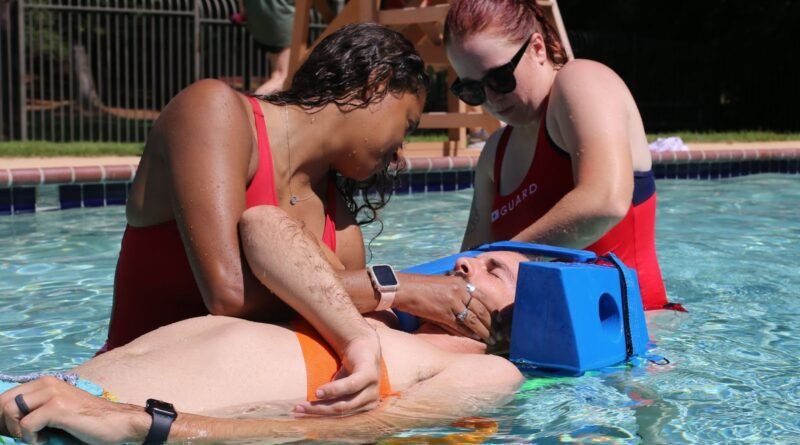What Are the Prerequisites for a Lifeguard Course?
It is through lifeguarding that people in aquatic environments are provided with safety, hence making it a noble profession. The pool, beach, and water park are some of the areas where lifeguards save lives by preventing accidents and responding to emergencies. To enroll for a lifeguard course, it’s necessary to know what you should have as a prerequisite if you intend to become one someday. This article will give insight into the major requirements and help you prepare yourself for such a fulfilling career.
Age Necessities
The first thing is to meet the age requirement as one of the prerequisites for joining the lifeguard course. Most programs of this kind require candidates to be 15 years old or older like in American Lifeguard Association (ALA). Younger participants may not have enough physical capacity and maturity required for saving lives through lifeguarding.
Physical Fitness
Lifeguarding requires strength, endurance, and agility because it is physically tasking. Thus, applicants are expected to be in excellent shape so that they can effectively execute their duties. Prior to enrolling in any lifeguard course however, there is need for one to evaluate their level of fitness. In addition, below are some particular fitness standards that may be asked of you:
Swimming Competence: For effective performance as a lifeguard, one needs strong swimming skills which most courses determine via timed swim tests. In these cases swimmers usually cover specified distances like 300 yards without stopping. Different styles such as front crawl and breaststroke might be involved.
Treading Water: Candidates must demonstrate treading water for about two minutes without using their hands. Thus they have an ability to keep body position while focusing on distressed swimmers.
Timed Events: There could also be timed events where candidates must recover an object submerged at specific depth within set limit time and then swim particular distance.Meaning thus your swimming speed plus performance under pressure will be tested here.
Medical Clearance
In most cases, it is necessary to obtain medical clearance from a healthcare provider before starting a lifeguard course. The purpose of this is to ascertain that you are physically fit enough to withstand the arduous activities associated with lifeguarding. The health check generally assesses your general condition looking at any conditions that may hamper your ability to perform rescues or give up first aid.
Pre-Course Swim Test
There are many certification programs for aspiring lifeguards that include pre-course swim tests to be passed before they can join. These tests usually consist of:
- Continuous Swim: Swimmers have to continuously cover specific distances like 300 yards using different techniques.
- Brick Retrieval: Swimmers will swim a weighted object from one end of the pool (usually 7-10 feet deep) back to where it started within the specified time.
- Treading Water: Tread water without the use of hands for a particular duration.
By such exercise, it allows in ensuring that all applicants who wish to successfully complete their lifeguard training have sufficient swimming abilities and endurance levels.
First Aid and CPR Certification
Knowledge of CPR and basic first aid is important for every potential lifeguard. Many courses require candidates who are enrolling for them to have first aid and CPR certifications. Such qualifications can be obtained from institutions such as the American Red Cross, American Heart Association, or American Lifeguard Association. During the course, you will receive more advanced instruction in these areas; however, having some fundamental knowledge beforehand is essential.
Understanding Lifeguard Duties
Before you take a lifeguard course, it is necessary to know what the duties and responsibilities of lifeguards are. These include:
- Surveillance: Consistently observing the water and surrounding areas for possible dangers or distressed swimmers.
- Rescue Skills: Carrying out water rescues like reaching assists, throwing assists, and swimmer’s rescues.
- First Aid: Offering first aid and cardiopulmonary resuscitation (CPR) to people in need that involves management of spinal injuries, administration of oxygen and use of automated external defibrillators (AEDs).
- Communication: Good communication with other lifeguards as well as patrons or emergency personnel.
- Enforcement of Rules: Keeping an eye on pool or beach rules to maintain safety for all users.
Knowing these duties will help you prepare mentally and emotionally for the lifeguarding course and job responsibilities that come later after that.
Dedication to Training
Lifeguard training requires dedication. The curriculum combines classroom work with hands-on practical experience. Candidates must be ready to attend all sessions, actively participate in them, and do all assignments given, as well as assessments. Training covers various topics such as water rescue techniques, emergency response, and safety protocols.
Equipment/Gear
Before embarking on your journey into taking a lifeguard class, there are several things you have to prepare in terms of equipment/gear. These usually are;
- Swimsuit: It should be comfortable enough for vigorous swimming activities that last long enough.
- Towel: You can use this when drying yourself after any wetting exercises one has been doing during breaks time 9-35a.m., 3 p.m., during breaks).
- Goggles: For better vision underwater while keeping your eyes safe from chemicals found in pools.
- Rescue Tube/Floatation Device – In some instances during training session candidates may be required to bring their own rescue tube / floatation device.
- Sunscreen: It will help protect your skin from the harmful rays of the sun, especially during outdoor training sessions.
You may also want to check with your lifeguard course provider to see if there are any specific requirements for equipment.
Conclusion
Becoming a lifeguard is a fulfilling adventure that starts by satisfying the entry criteria for a lifeguard course. Once you have confirmed that you meet the age requirement, maintained good physical condition, passed a medical examination, and possess basic first aid as well as CPR certificates, you can be sure that beginning training is not far away.
Further, having knowledge about what a lifeguard does and dedicating yourself to his/her training would enhance your chances of success while undertaking the course and eventually becoming an adept and confident lifeguard. The American Lifeguard Association offers comprehensive courses that include guarding people’s lives, which will enable one to become a highly skilled life-saver. Get going now so that you get familiarized with some of these dedicated rescue personnel who always strive to keep our aquatic space risk free.

